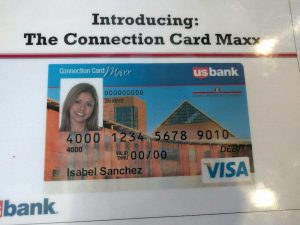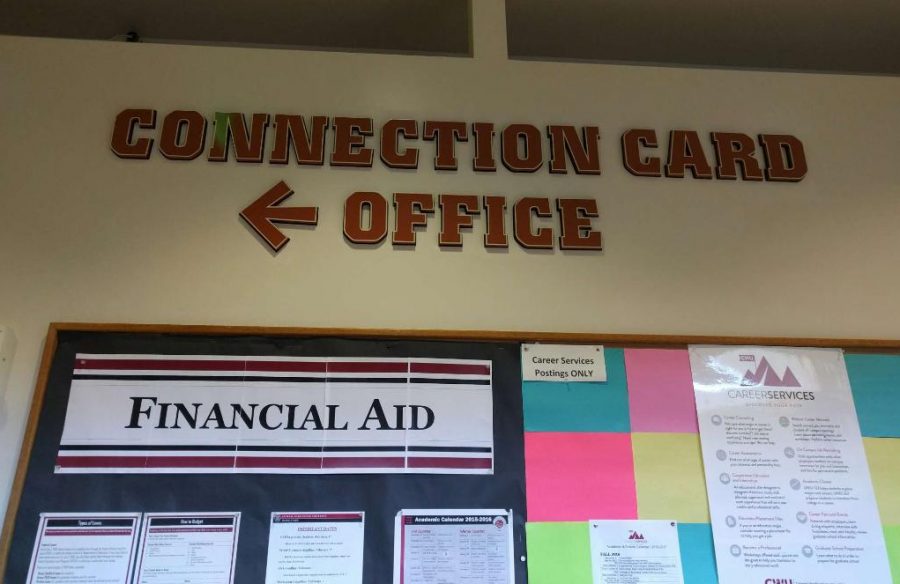More than just another piece of plastic
Connection cards hold the key to students’ dorms, meals and events on campus
July 18, 2016
Central Washington University has every student get a Connection Card even if you live on or off-campus, but not every student may really know what they are used for.
According to CWU’s brochure on the connection card, when it comes to living on campus a student’s meal plan will be tied directly to the card. All students have the option of getting an athletic, large, medium or small meal plan that comes out of the student’s tuition money.
An athletic meal plan’s total cost a year is $6,865 and usually, students get about $884 dining dollars per quarter, compared to a small meal plan, which costs $4,336 with students getting $506 dining dollars per quarter.
These meal plans are only available to students who live in residence halls and are part of the housing contract. Residential meal plans can also only be used in the dining and catering locations–meal plans can not be used in the Wildcat shop or Brooks Library.
Students with meal plans receive a 65 percent discount on food purchases on campus and are not required to pay Washington State’s eight percent sales tax.
Each quarter new meal plans are automatically added to a student’s card and the remaining funds that were from the previous quarters will roll over to next quarters, except at the end of spring quarter. If you run out of money and have an athletic or large meal plan you can only add money directly from Dining Dollars to the account without having to pay an overhead cost.
Andrew Caveness,program support supervisor of the connection card office, says that students who live off campus who want to have a meal plan can set up a “Freedom Plan.” This plan allows students to put money on their connection card and receive a five percent discount off of their purchase.
If students put money on their Freedom Plan during the first month of the quarter they can receive bonus bucks that can be used throughout that month. The bonus amounts vary depending on how much money is added. Students who add $0-199 receive a five percent bonus, $200-399 hundred dollars receive a seven percent bonus and amounts added at $400 and above receive a 10 percent bonus.
According to Caveness, the connection cards are not only used for meal plans, but provide other services as well. The cards can be used to grant access to the recreation center and the aquatic center, school sporting events, concerts and theatre plays. They also allow students to charge transactions from the Wildcat Shop on to their student accounts.
Connection cards are also used to check books and electronics out from the library. When using it simply as a student ID, students can show their cards to some off-campus vendors who provide discounts.
The card is required for students who live in campus, considering it can be used as a key card to get into residence halls that require key card accessibility.
“It’s kinda hard to get by without using a connection card,” Caveness said.
Considering the amount of information placed on the cards, students want to avoid losing them. According to Caveness, when you lose your card or have it stolen, it costs $20 to replace it, even more if it is used as an electronic connection key card, costing $35 to replace.
As far as tracking data and the information contained within the cards, Caveness says the university uses a program called, “CS Golden” that will not only gather all the data, but also produces the cards as well.
Lemuel Cannonjer, a personal banker with U.S. Bank, says the connection card also doubles as a debit card on campus and allows students to manage their own money and receive benefits offered through the bank. The card works by having two sides, one with a red strip that is used for school and the other having a black strip which is used for the bank. According to the U.S. Bank, they have been offering the service for 10 years now.

The “Connection Card Maxx” doubles as a debit card through US Bank on campus.
“I think what it does for students is gives them the convenience of getting one card and getting out the door, especially when you live on campus,” Cannonjer says. “It gives them just the purpose of the card and having it, so they can step out the door, go to the bank, or go off-campus with that same card.”
To learn more about the Connection Cards visit the CWU Connection Card website.


